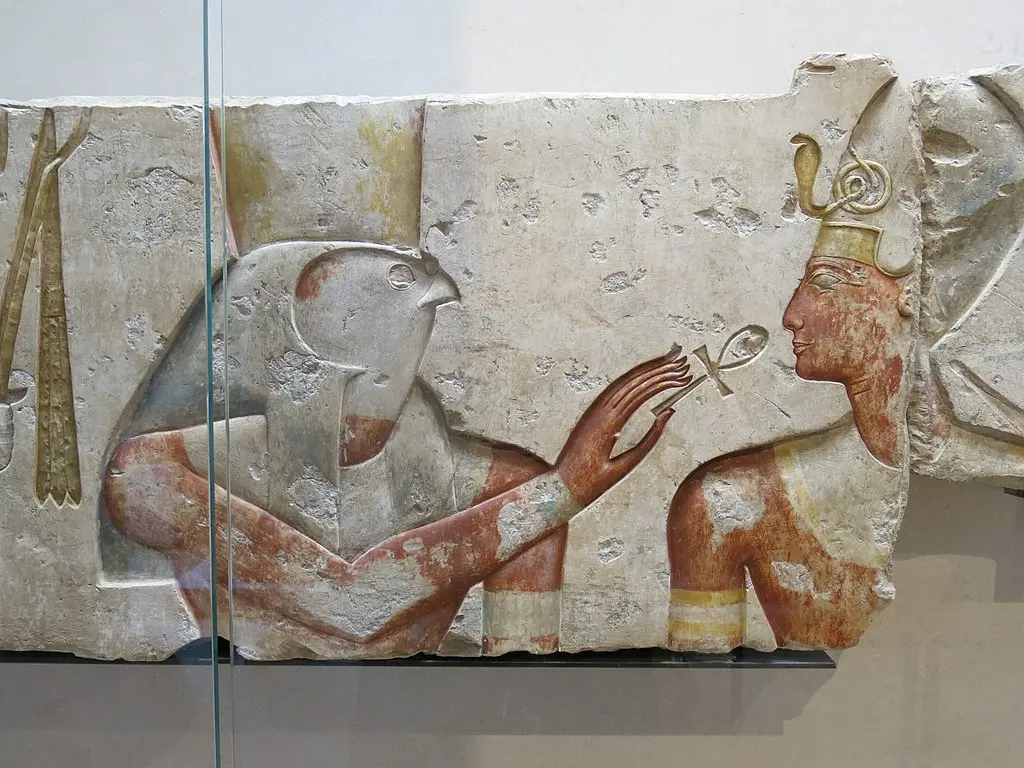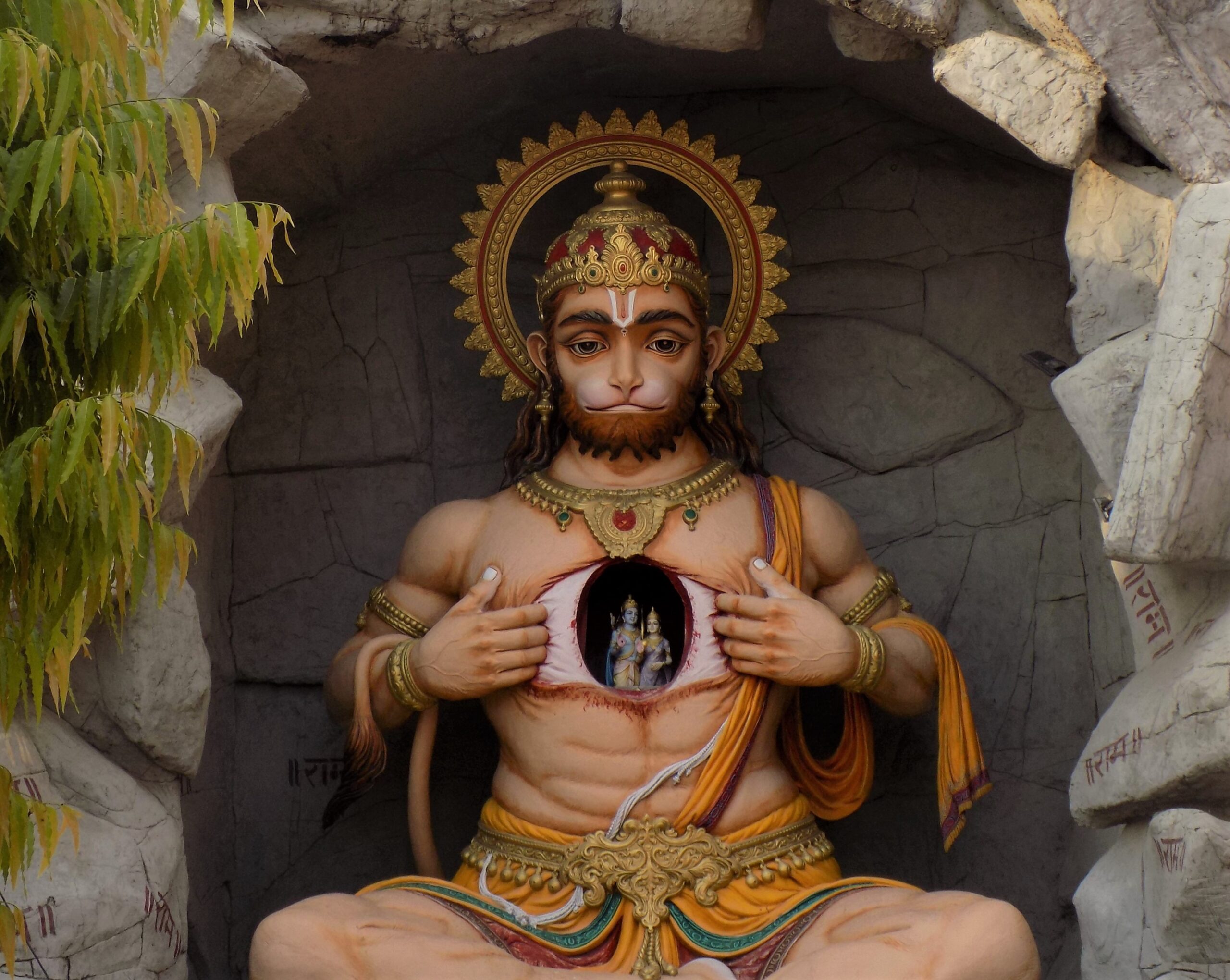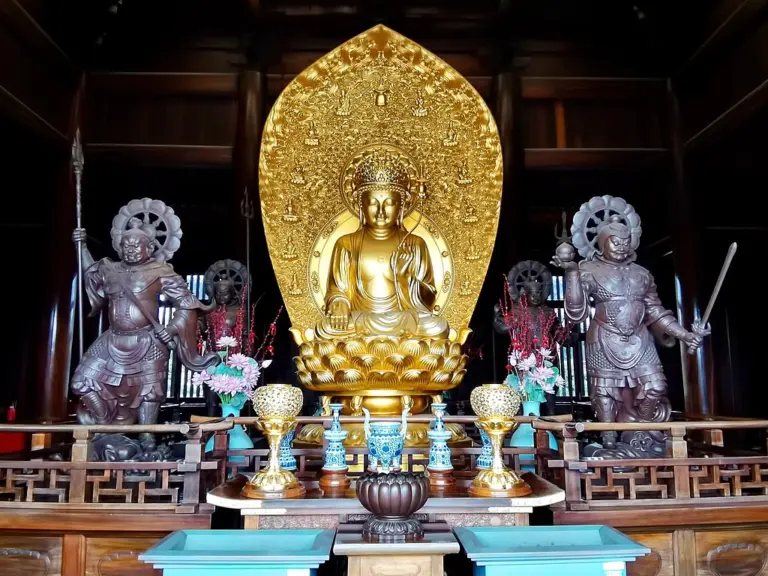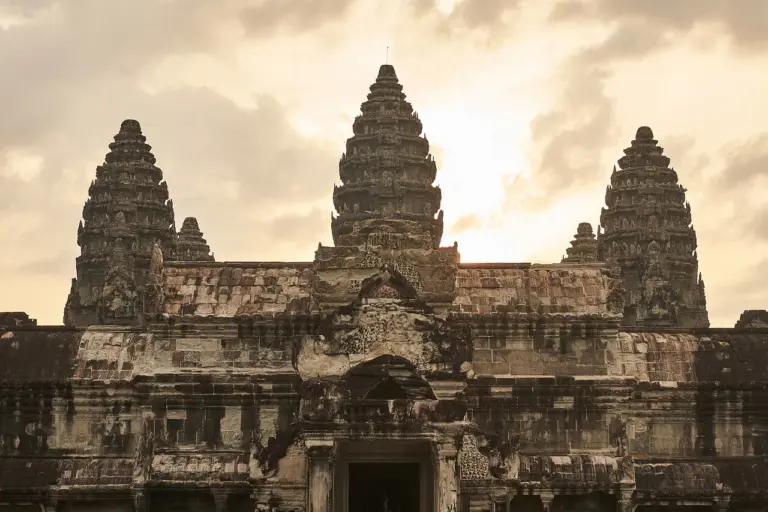Mantras are powerful tools for spiritual growth and transformation, with rich history and cultural significance in many spiritual practices such as Buddhism, Hinduism, and Jainism. In Sanskrit, the word “mantra” means “instrument of the mind.” They contain powerful, sacred sounds that are said to be energetically charged and are capable of influencing the mind, body, and spirit. When chanted, mantras can create a vibration that helps bring about a sense of calm, focus, and inner peace.
Typically made up of Sanskrit syllables, and many of them are associated with specific deities or spiritual energies, some mantras are more general and can be used for a variety of purposes, while others are more specific and target particular aspects of the self or the universe.
While traveling throughout Asia, be mindful when you’re in Buddhist temples, you’re sure to hear at least one of the mantras in this article.
Chanting mantras is believed to activate certain areas of the brain, particularly the prefrontal cortex, which is associated with cognitive functions such as attention and decision-making.
It is also believed to stimulate the production of certain hormones and neurotransmitters that help to reduce stress and promote a sense of well-being.
Incorporating mantras into your daily spiritual practice such as during yoga or meditation, can help you to deepen your connection to your inner self, cultivate a greater sense of peace and tranquility, and tap into the power of the universe. Using mudras while chanting also help a lot in the grounding process.
It’s something easily done even while traveling!
So, let’s go through some of the most powerful and widely-used Buddhist mantras!
Table of Contents
ToggleOm, the Primordial Mantra
Before touching the other mantras, we must first understand the significance of Om. Om is considered to be the primordial sound of the creation, representing the essence of the universe. Om is considered to be the sound from which all other sounds and mantras emerged from which is why it is also known as the Seed Mantra. It represents the ultimate reality, the source of all existence, and the underlying unity of all things. Chanting Om is believed to help you connect with this ultimate reality, cultivate inner peace and clarity, and purify the mind.
In the Buddhist context, Om is also associated with the three bodies of Buddha (Trikaya): the Dharmakaya (ultimate reality), the Sambhogakaya (enjoyment body), and the Nirmanakaya (manifestation body). Through chanting Om, one can connect with all three bodies and develop a deeper understanding of the nature of reality.
5 Buddhist Mantras
1. Om Mani Padme Hum
Om Mani Padme Hum is one of the most well-known and widely recited Buddhist mantras, particularly in Tibetan Buddhism but has since made its way even to Taoism. It is believed to have originated in India and then spread throughout Tibet, China, and other parts of Asia.
The mantra has deep cultural significance in Tibetan Buddhism and is often associated with the Bodhisattva of Compassion, Avalokiteshvara (also known as Chenrezig in Tibet, Guan Yin in China or Kannon in Japan) who is revered in Mahayana Buddhism. Avalokiteshvara made a vow to never rest until all sentient beings were freed from suffering, and that Om Mani Padme Hum embodies this vow.
A Bodhisattva is a being who can already attain enlightenment (Nirvana) but chooses to stay in the cycle of rebirths (Samsara) in order to help all sentient beings attain enlightenment.
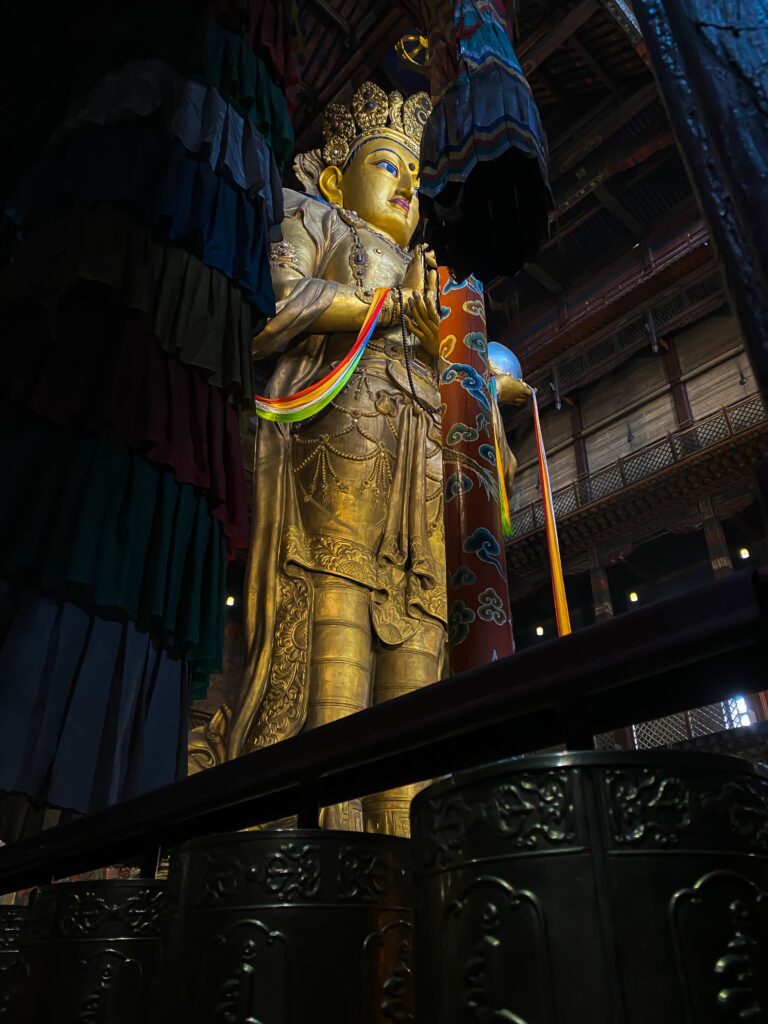
Meaning of Om Mani Padme Hum
Om represents the body, speech, and mind of Buddha, as well as the underlying unity of all things. It is considered to be the most fundamental and powerful sound, from which all other sounds and mantras are derived.
Mani means jewel, representing the quality of compassion, which is like a precious gem that can enrich our lives and those of others. The jewel also symbolizes the attainment of enlightenment, which is the ultimate goal of the Buddhist path.
Padme means lotus, symbolizing wisdom, which can help us rise above the murky waters of ignorance and confusion. The lotus flower grows out of the mud, but its beauty and purity remain untouched by the impurities of the world. Similarly, wisdom can help us transcend our limitations and see the true nature of reality.
Hum represents the indivisibility of wisdom and compassion, and can also be seen as a transformative power that can purify our mind and liberate us from suffering. It is believed to represent the perfect union of the method (compassion) and wisdom aspects of the Buddhist path.
The mantra as a whole, “Om Mani Padme Hum,” can be translated to “Hail to the jewel in the lotus.” The six syllables of the mantra are believed to represent the Six Perfections (or Six Paramitas) of Buddhism: generosity, ethics, patience, diligence, renunciation, and wisdom. These qualities are essential for our spiritual development and are said to lead to the attainment of enlightenment.
Benefits of Om Mani Padme Hum
- Purify negative karma accumulated through past actions, thoughts, and speech. This can help overcome obstacles and difficulties in life
- The mantra is associated with Avalokiteshvara, the Bodhisattva of Compassion, and reciting it is believed to activate the heart chakra, increasing the capacity for compassion and wisdom
- Helps you progress on the path to enlightenment, leading to liberation from the cycle of birth and death
- Invoke the blessings and protection of Avalokiteshvara, as well as other enlightened beings
- Relieves physical, emotional, and spiritual suffering, promoting well-being and inner peace
- Helps to calm the mind, reducing stress and promoting a sense of relaxation and tranquility
2. Om Tare Tuttare Ture Soha
The Green Tara Mantra is one of the most popular and revered mantras in Tibetan Buddhism, as well as in other Buddhist traditions. Tara, meaning “star,” is a female Bodhisattva who is considered to be a manifestation of the enlightened activity of all the Buddhas. She is also known as the “Mother of all Buddhas” because of her compassionate nature and her ability to guide and protect sentient beings.
According to Buddhist legend, Tara was born from the tears of the Bodhisattva of Compassion, Avalokiteshvara, as he looked upon the suffering of all beings and realized that there was still so much work to do. Tara is then said to have appeared from his tears, offering him her assistance and guidance in his work. Thus, Tara is often considered to be a close companion and protector of Avalokiteshvara.
The Green Tara Mantra specifically is believed to have originated in India, and was later adopted and popularized by Tibetan Buddhists. In Tibetan Buddhism, Green Tara is considered to be one of the most accessible and powerful Bodhisattvas for practitioners, as she is said to have the ability to quickly respond to the needs of those who call upon her. If you look at some of her images, you might notice her right leg is always outstretched, symbolizing that she is ever ready to spring into action thus the Tara mantras are usually said to have immediate effects. There is also a full version of the mantra that is tied to White Tara (there are 21 emanations of Tara but that’s for another time) that goes: Om Tare Tuttare Ture Mama Ayur Jnana Punye Pustim Kuru Soha.
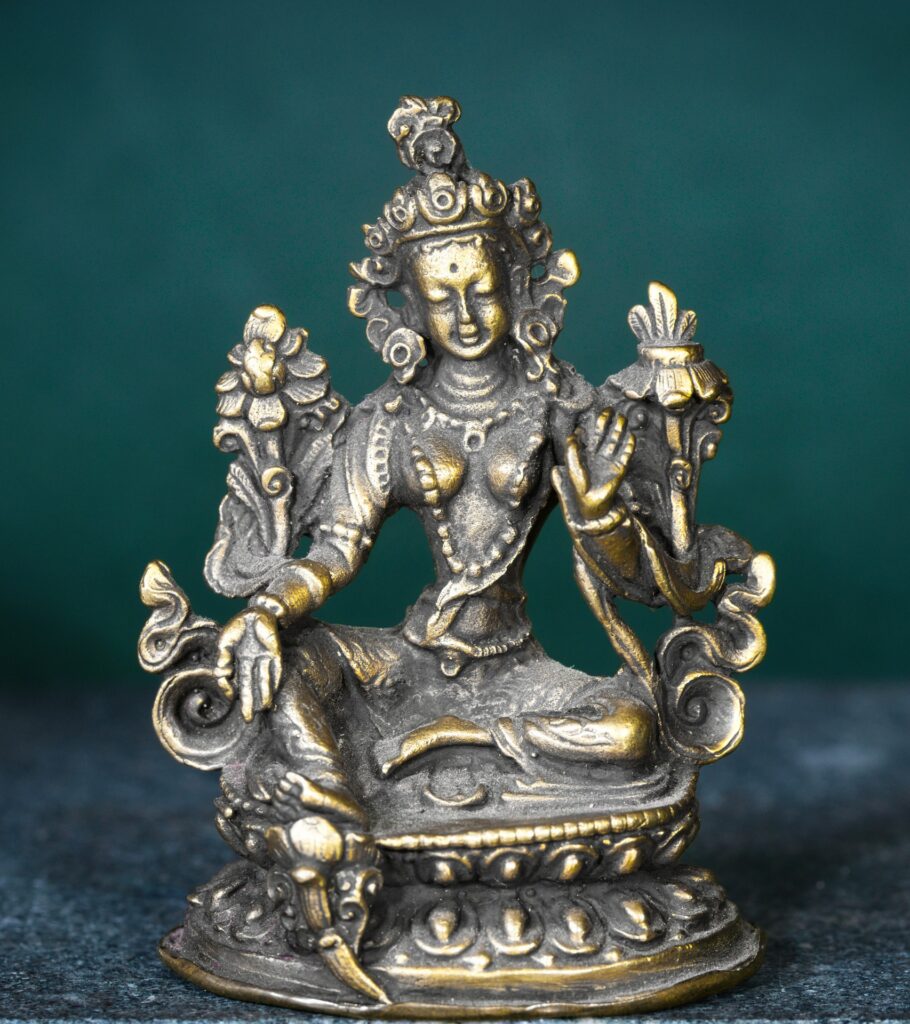
Meaning of Om Tare Tuttare Ture Soha
Om represents the body, speech, and mind of all Buddhas, as well as the underlying unity of all things. It is considered to be the most fundamental and powerful sound, from which all other sounds and mantras are derived.
Tare represents the liberating energy of Tara, who is believed to swiftly free sentient beings from all kinds of suffering and fears.
Tuttare represents Tara’s ability to dispel the eight fears, including the fears of lions (pride), elephants (ignorance), fire (anger), snakes (envy), robbers (wrong views), imprisonment (avarice), floods (attachment), and demons (doubts).
Ture represents Tara’s ability to grant protection and strengthen the mind and body against all external and internal obstacles, including illnesses, malevolent spirits, and negative emotions.
Soha is a word usually at the end of mantras and means for the mantra to take root in one’s mind
The mantra can be translated as “I prostrate to the Liberator, Mother of all the Victorious Ones.”
Benefits of the Green Tara Mantra
- Provide protection from physical and mental harm, as well as from obstacles and negative energies
- Believed to have healing properties, and can help alleviate physical and emotional suffering
- The mantra is associated with the qualities of compassion and love, and reciting it can help cultivate these qualities within oneself and towards others
- Helps calm the mind and bring inner peace, even in difficult or stressful situations
- Helps you progress on the path to enlightenment by purifying negative karma and developing positive qualities such as wisdom and generosity
- Establishes a deeper connection with Tara and receive her blessings and guidance
3. Gate Gate Paragate Parasamgate Bodhi Svaha
The Heart Sutra is a well-known Mahayana Buddhist text that is considered to be one of the most important sutras in the Buddhist canon. It is believed to have been composed in India between the 1st century BCE and the 1st century CE, and is also attributed to the bodhisattva Avalokiteshvara. In the Heart Sutra, Avalokiteshvara addresses Sariputra on the concept of emptiness and the nature of reality (Form is emptiness, emptiness is form) which leads to the mantra itself. If you want understand the concept of emptiness, you can check out my other article that goes in-depth here.
The mantra “Gate Gate Paragate Parasamgate Bodhi Svaha” appears at the end of the Heart Sutra, and is considered to be a summary of its teachings. The mantra is a call to action, urging us to strive towards the attainment of enlightenment and to let go of all attachments and obstacles that stand in the way. The repetition of “gone” emphasizes the importance of letting go and moving beyond our current state of being, towards a state of ultimate awakening. The mantra is often chanted as a form of meditation, with the repetition of the phrase serving as a means of focusing the mind and cultivating mindfulness.
If you’re curious, here’s a beautiful rendition of the whole Heart Sutra in Sanskrit.

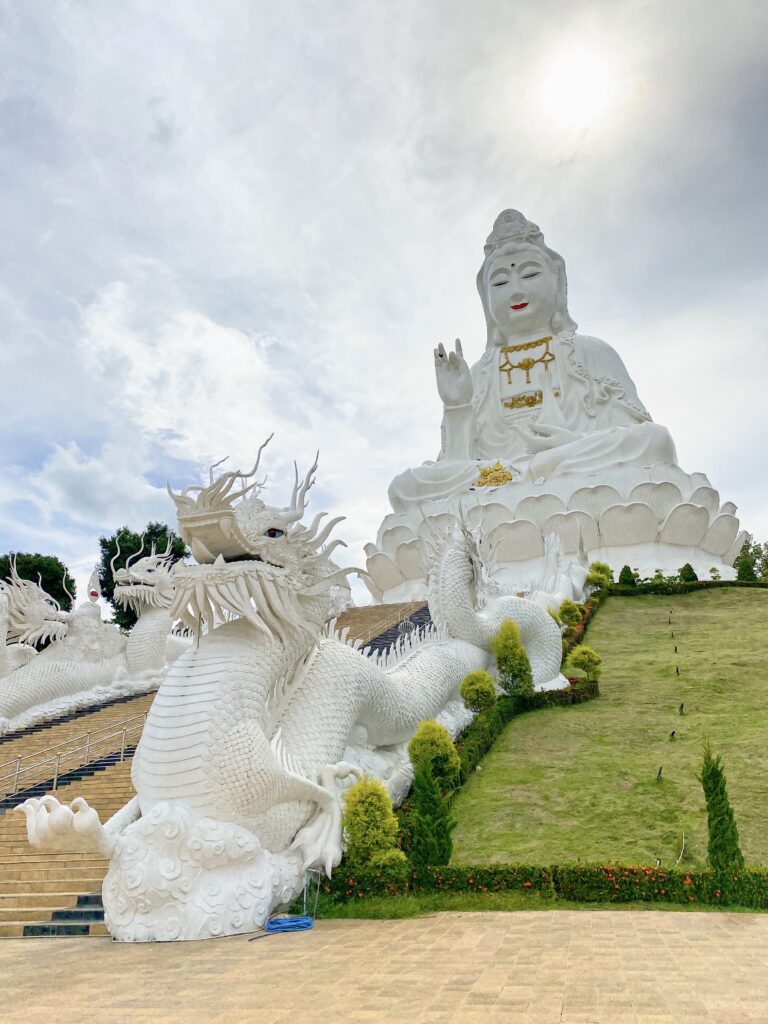
Meaning of Gate Gate Paragate Parasamgate Bodhi Svaha
The first “Gate” represents the gate of impermanence, and the second “Gate” represents the gate of emptiness. Together, they signify the transcendence of dualistic thinking and the realization of the true nature of reality.
Paragate means to go to the other shore, beyond suffering and ignorance. It signifies the attainment of enlightenment and the ultimate goal of Buddhist practice.
Parasamgate means to go far beyond, beyond all limitations and obstacles. It represents the complete liberation from all forms of suffering and the realization of the highest truth.
Bodhi means awakening, the state of enlightenment that comes from the realization of the true nature of reality.
Svaha is a Sanskrit word that is often used as an exclamation, similar to “Hail!” or “So be it!”
The mantra is often translated to “Gone, gone, gone beyond, gone completely beyond, enlightenment, hail!”
Benefits of the Heart Sutra Mantra
- The mantra expresses the idea of transcending the cycle of birth and death. By reciting the mantra, we can move beyond the limitations of this physical existence, ultimately achieving enlightenment
- The mantra emphasizes the attainment of wisdom, which is essential to the path of enlightenment. By reciting the mantra, we can develop wisdom and gain a deeper understanding of the nature of reality
- Helps to eliminate ignorance and delusion, which are believed to be the root causes of suffering
- Believed to invoke the blessings and protection of the Buddha and other enlightened beings, helping to create a positive and supportive environment for spiritual practice
- Helps remove obstacles and challenges that may arise on the path to enlightenment, making it easier to make progress and achieve one’s spiritual goals
- Helps to calm and focus the mind, reducing distractions and promoting inner peace and mental clarity.
4. Namo Amitabha Buddha
Namo Amitabha Buddha is a common Buddhist chant and prayer that is particularly popular in East Asian countries such as China, Japan and South Korea, especially among the Pure Land sects of Mahayana Buddhism. While I was in Hong Kong, this mantra was being played in almost every temple! The phrase “Namo Amitabha Buddha” is a form of homage or reverence to Amitabha Buddha, the Buddha of Infinite Light and Infinite Life.
Amitabha Buddha is a central figure in Pure Land Buddhism and of the Five Cosmic Buddhas, which originated in China and spread throughout East Asia. Pure Land Buddhism emphasizes the importance of faith and devotion to Amitabha Buddha as a means of attaining rebirth in his Pure Land, a paradise-like realm where beings can more easily achieve enlightenment. It is said that simply by reciting the mantra 10 times with sincerity is enough for Amitabha Buddha and his retinue to pick you up after death to take you to his Pure Land where you can focus on attaining enlightenment. This was actually one of his 48 vows that he made before he became a Buddha.
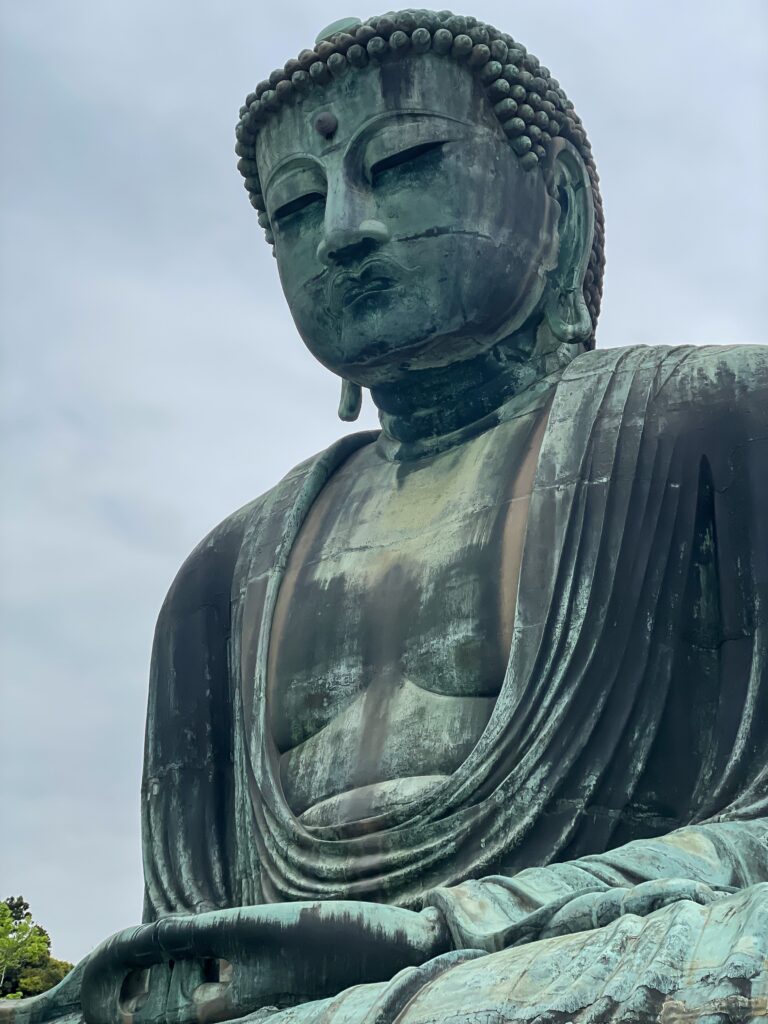
Meaning of Namo Amitabha Buddha
Namo expresses the act of paying homage or showing respect. It is often used at the beginning or end of a Buddhist chant or prayer.
Amitabha is part of the name of Amitabha Buddha, but it also means “Infinite Light”
Buddha means “awakened one” and refers to someone who has attained enlightenment and is free from the cycle of birth and death. Amitabha Buddha is considered to be one of the Five Cosmic (Dhyani) Buddhas, who represent various aspects of enlightened consciousness.
There are many ways to chant the mantra depending on where you’re from. In Japan for example, it’s chanted as “Namo Amida Butsu”, in Chinese countries it’s “Namo Amituofo.”
In essence, the mantra “Namo Amitabha Buddha” is an expression of reverence and devotion to Amitabha Buddha, as well as an aspiration to be reborn in his Pure Land and attain enlightenment.
Benefits of the Amitabha Buddha Mantra
- By reciting the mantra, we can attain rebirth in the Pure Land after death, where we can continue to progress on the path to enlightenment without the distractions and obstacles of the human realm
- Purifies negative karma accumulated through past actions, thoughts, and speech. This can help one to overcome obstacles and difficulties in life and progress more quickly on the path to enlightenment
- Believed to accumulate merit, which can be used to achieve spiritual goals and benefit oneself and others
- Invoke the blessings and protection of Amitabha Buddha, who is revered for his compassion and ability to guide beings to liberation
- Helps to calm and focus the mind, reducing distractions and promoting inner peace and mental clarity.
5. Om Muni Muni Maha Muniye Soha
The Shakyamuni Buddha mantra is one of the most widely known mantras in Buddhism. It is associated with Shakyamuni Buddha or Siddhartha Gautama, the historical Buddha who lived in India over 2,500 years ago and is considered the founder of Buddhism. He is the central figure in Theravada Buddhism, the dominant tradition practiced around Southeast Asia.
According to Buddhist tradition, the Shakyamuni Buddha mantra was taught by the Buddha himself, and is highly revered for its spiritual significance as it is believed to contain the essence of the Buddha’s teachings.
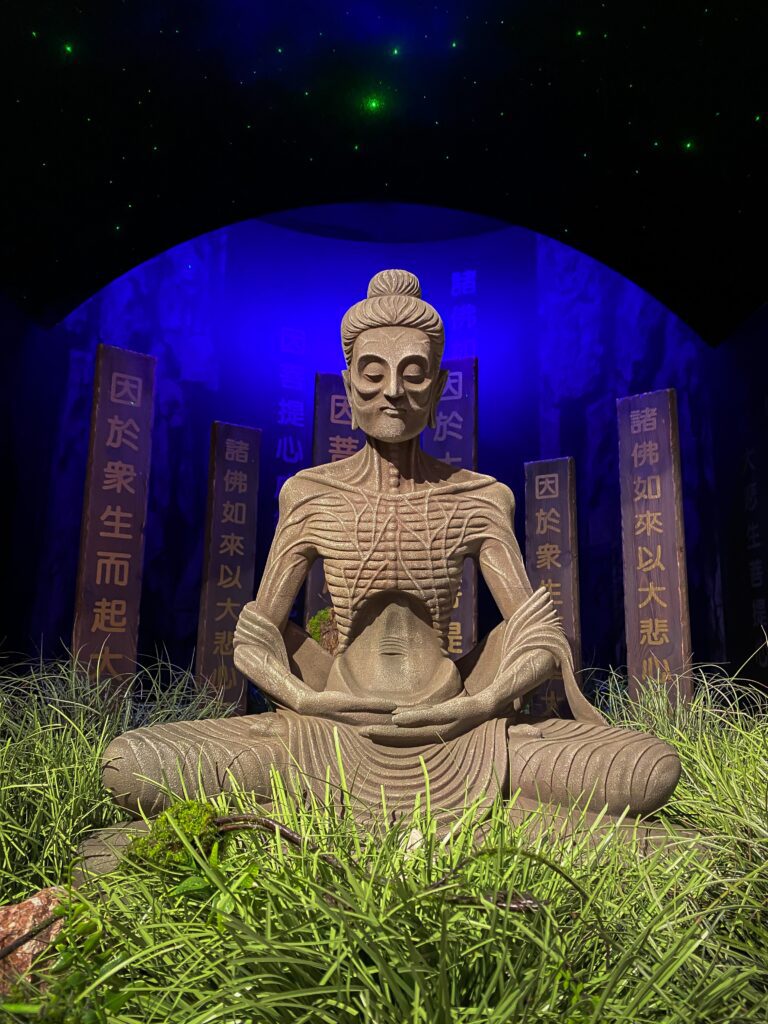
Meaning of Om Muni Muni Maha Muniye Soha
Om represents the body, speech, and mind of all Buddhas, as well as the underlying unity of all things. It is considered to be the most fundamental and powerful sound, from which all other sounds and mantras are derived
Muni refers to a sage or wise one who has attained spiritual liberation and enlightenment, and is often used to refer to the Buddha.
Maha Muniye means “great sage” or “great wise one,” emphasizing the Buddha’s wisdom and enlightenment.
Soha means for the mantra to take root in one’s mind, allowing its power and blessings to be fully received and integrated.
The mantra “Om Muni Muni Maha Muniye Soha” is associated with Shakyamuni Buddha, the historical Buddha who lived in ancient India. The mantra can be translated as “Om wise one, wise one, great wise one, to the wise one of the Shakyans I bow down and take refuge.”
In case you’re wondering, Siddhartha Gautama was born in the town of Lumbini, which is located in present-day Nepal, and was a prince of the Shakya clan thus his name of Shakyamuni Buddha. Muni is derived from the word Shakyamuni.
Benefits of the Shakyamuni Buddha Mantra
- Helps develop the qualities of wisdom and compassion, which are essential to the path of enlightenment.
- Gain a deeper understanding of the teachings of the Buddha and cultivate the qualities of a bodhisattva
- Helps to eliminate ignorance and delusion, which are believed to be the root causes of suffering. By reciting the mantra, we can overcome these obstacles and attain inner peace and clarity.
- Purifies negative karma accumulated through past actions, thoughts, and speech, which can help one to overcome obstacles and difficulties in life and progress more quickly on the path to enlightenment
- Invoke the blessings and protection of Shakyamuni Buddha, who is revered for his teachings and his ability to guide beings to liberation
- Remove obstacles and challenges that may arise on the path to enlightenment, making it easier to make progress and achieve one’s spiritual goals
- Help to calm and focus the mind, reducing distractions and promoting inner peace and mental clarity. It is also believed to help one cultivate mindfulness and concentration, which are important aspects of Buddhist meditation practice.

